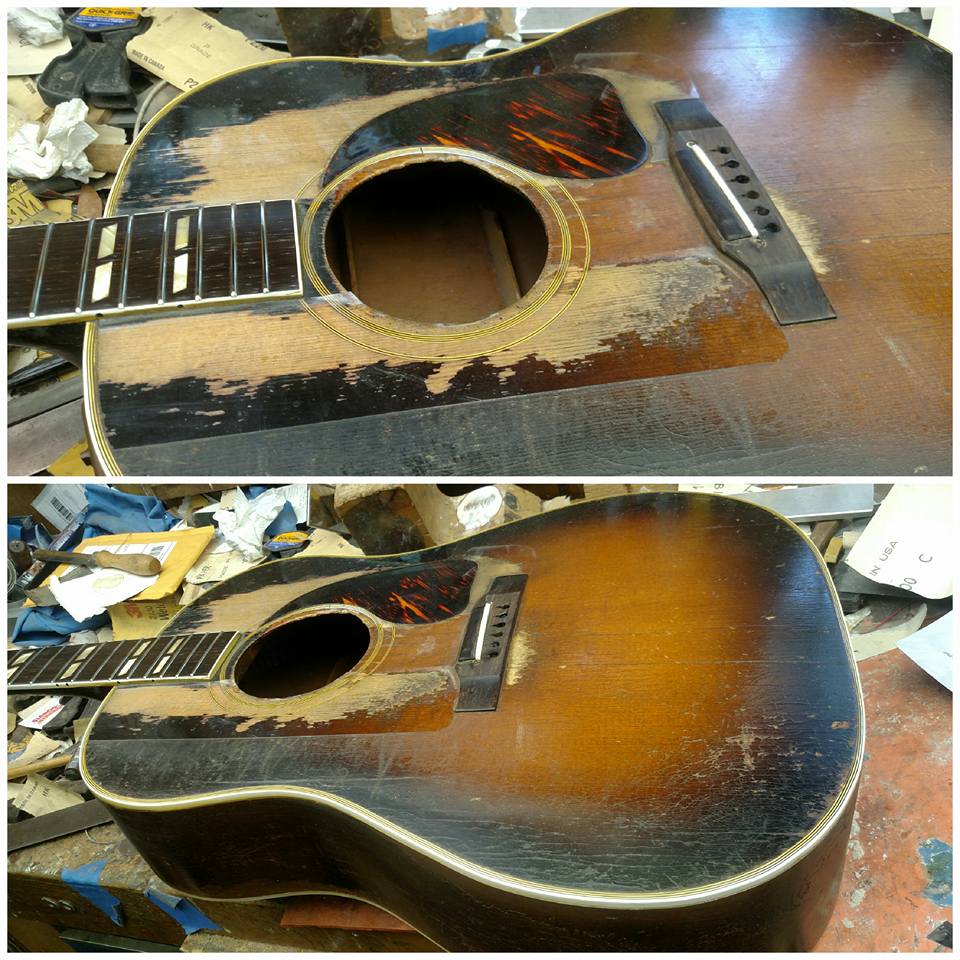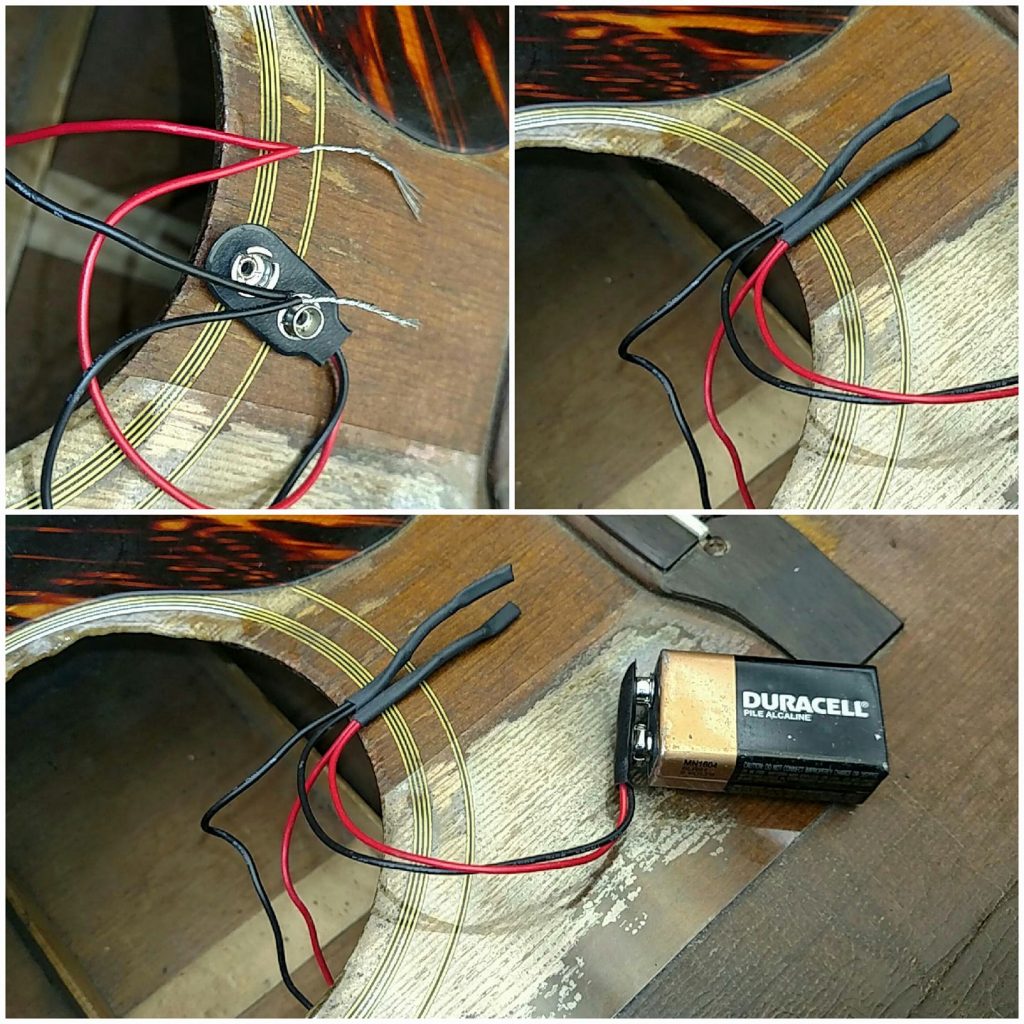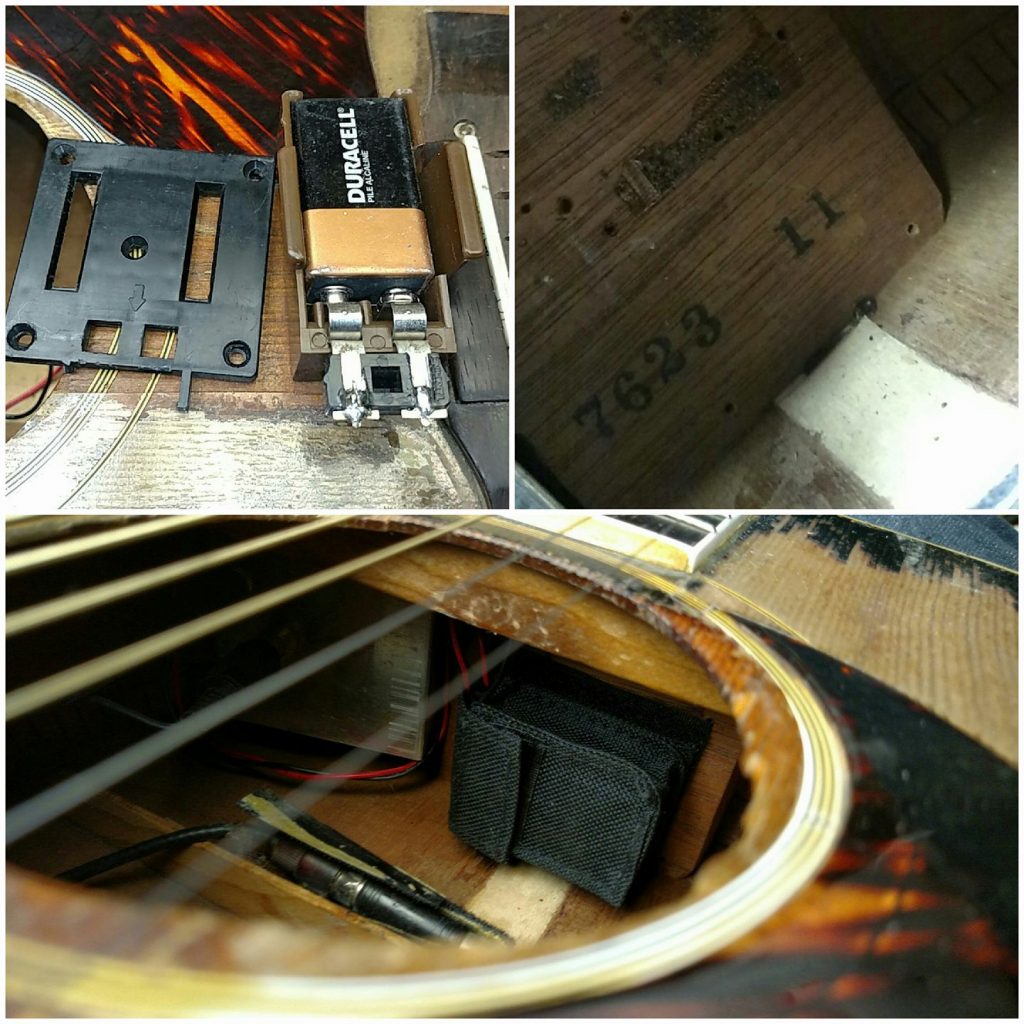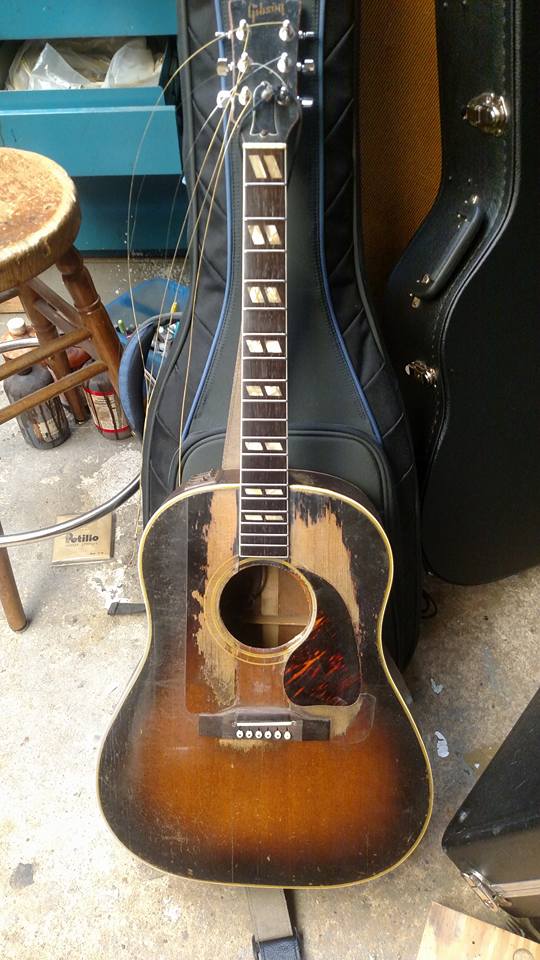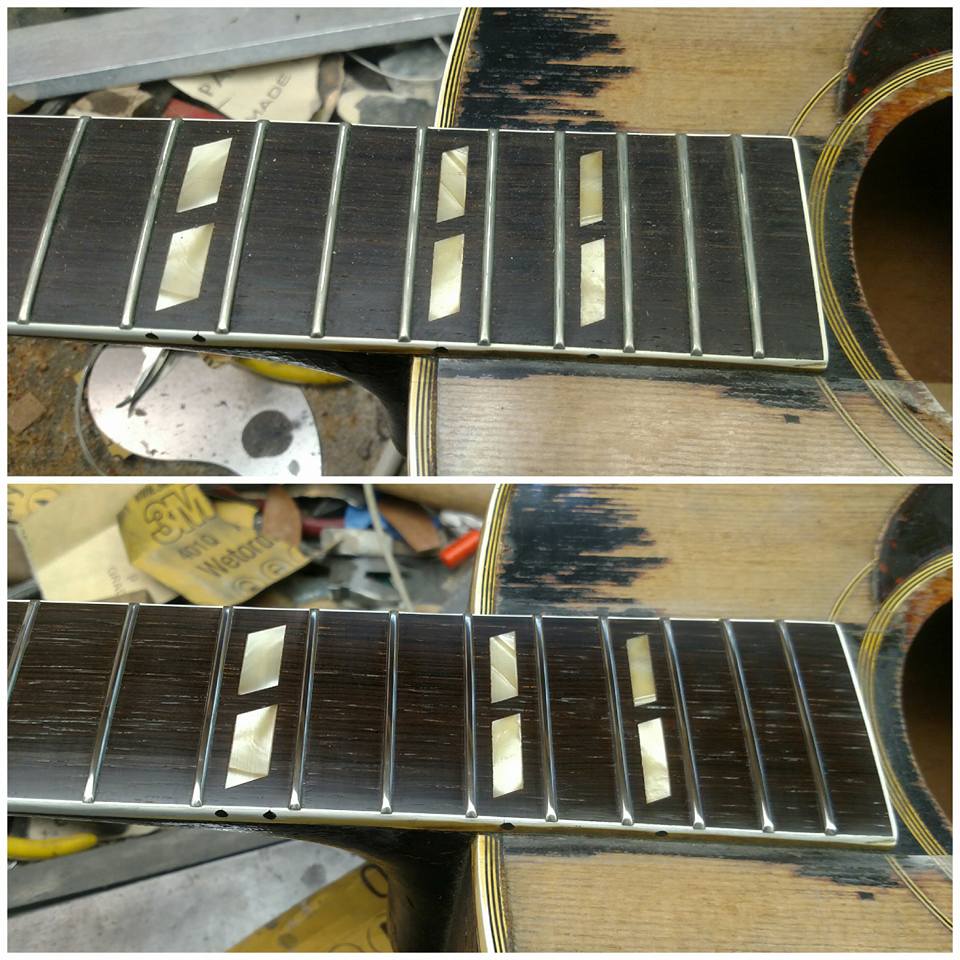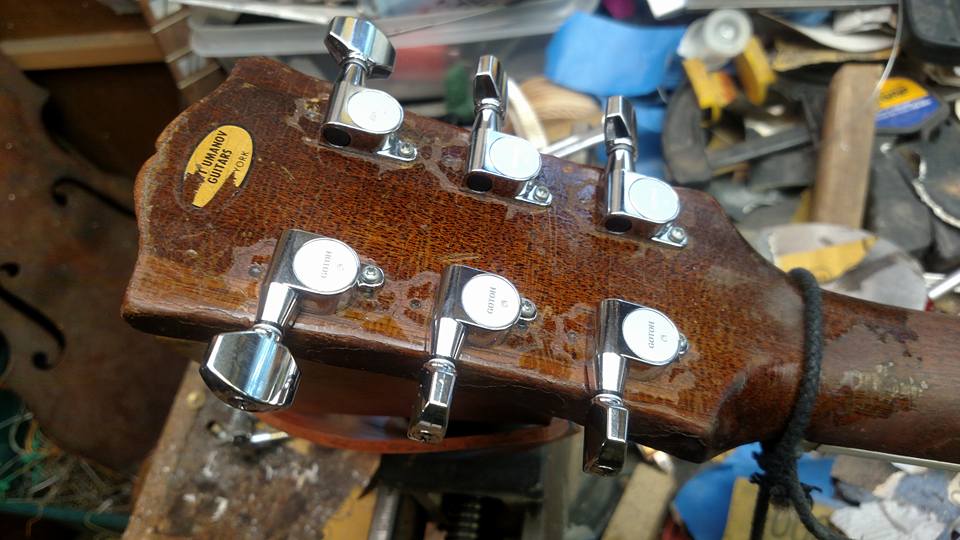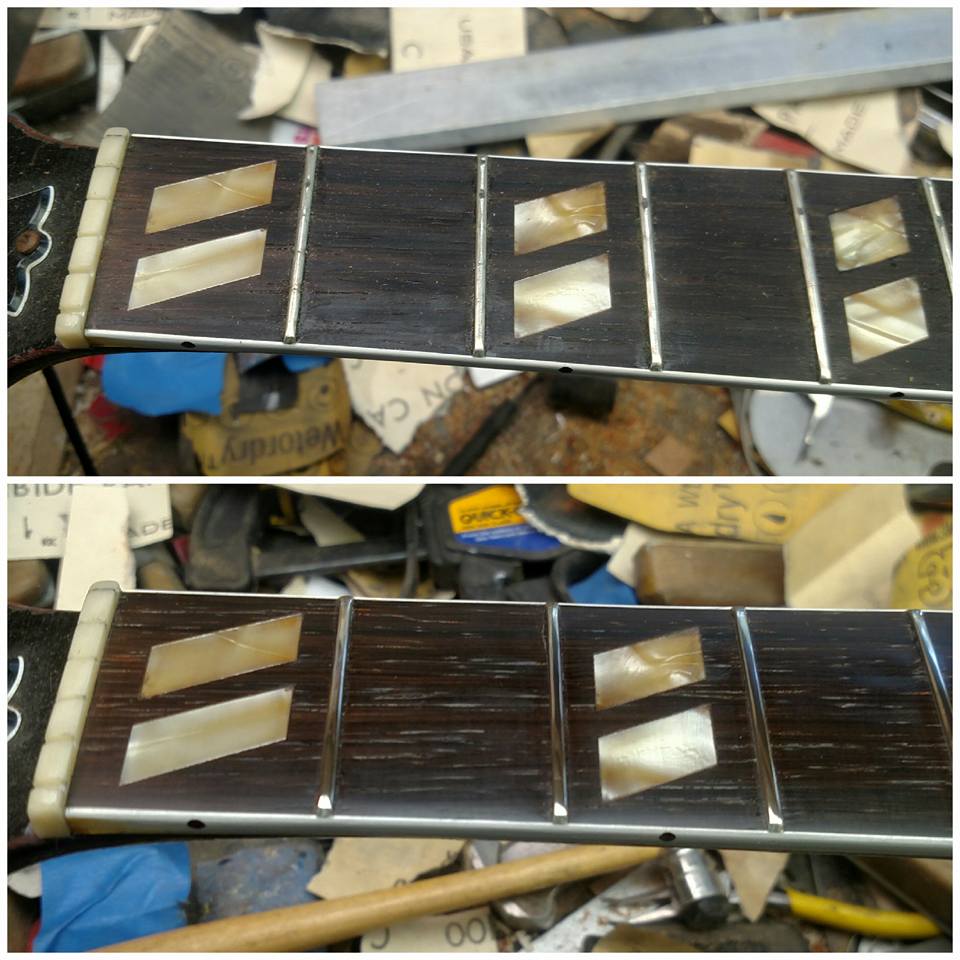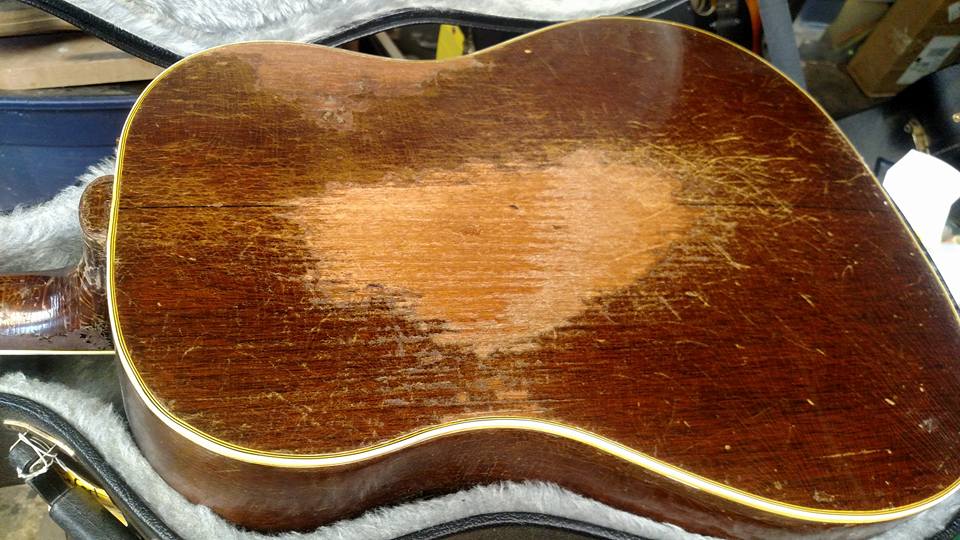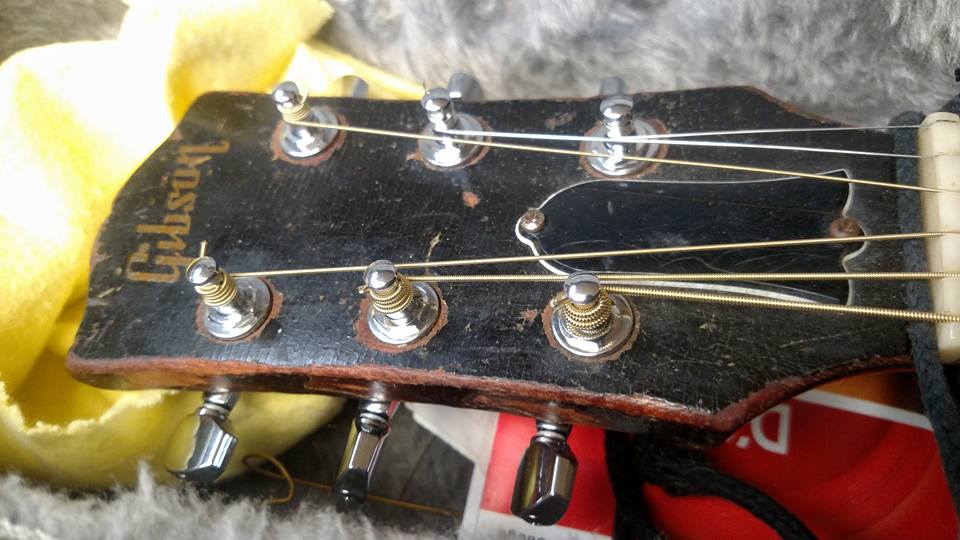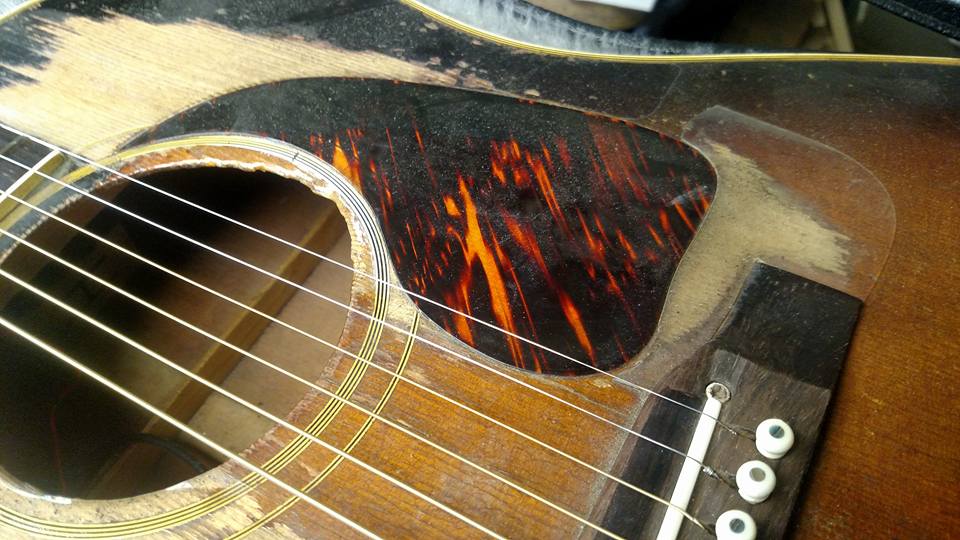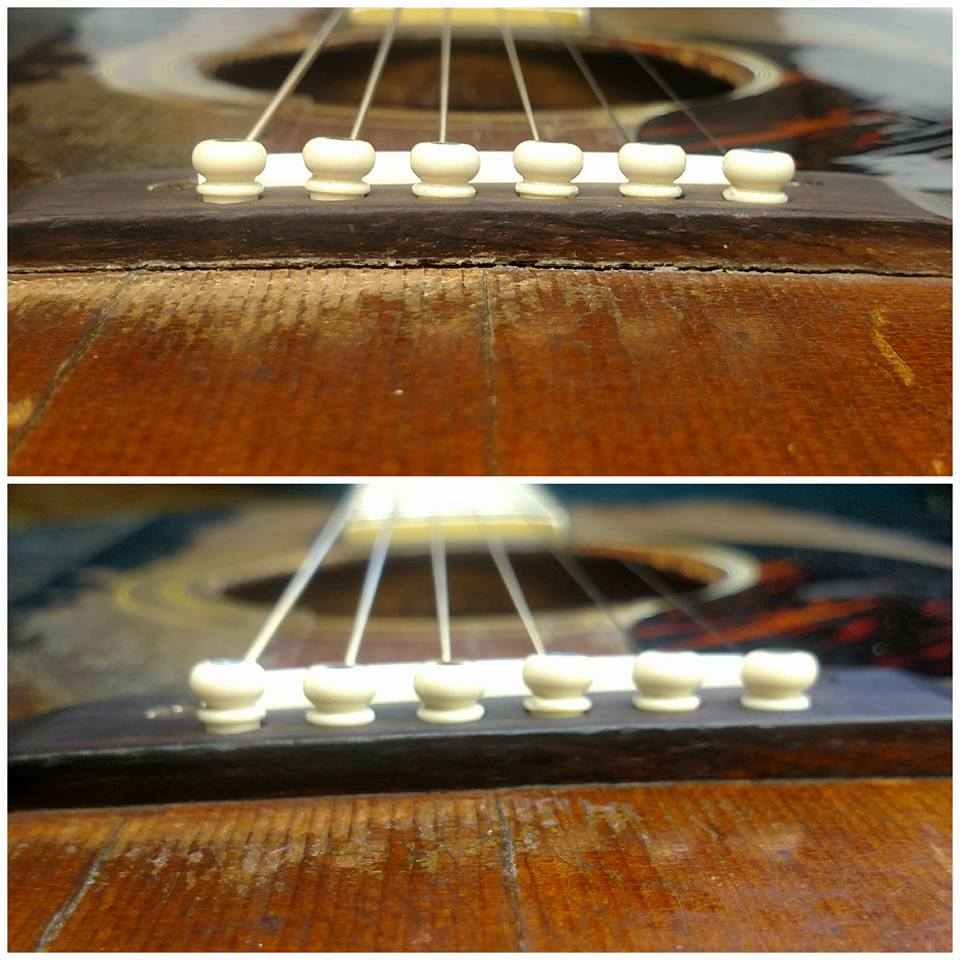Steve Forbert’s 1949 SJ Gibson restoration. Steve has been a longtime dear friend of my Father (Dr. Phil Petillo). This guitar has been through hell in a good way. So many shows and also travelled the world. The frets needed some attention. A lot of repair guys/techs would recommend a refret in its present state but this neck and fingerboard are very fragile. A technique my Father (Dr. Phil Petillo) invented is to reshape the edges with his patented file and bring a flat fret back to its rounded state. After the filing was done I did a micropolishing, another one of my Father’s processes. Micropolishing is also used with his patented Petillo Precision Frets aka “triangle/pyramid frets” and I apply this process to every setup I do. The procedure involves the frets being polished from 400 grit sand paper all the way up to 10,000 grit lens paper (which polishes telescope lenses). The entire idea is to make the surface area so glass-like the metal string can resonate a clear true note with intonation clarity. I always use the example of the wine glass filled with liquid and the player rubs the rim…and the friction of that motion makes a note. You can imagine if the rim was rough, it would not be as reflective to carry the note. That is the principle with polishing the frets to so fine and flawless a gloss…the notes seem to hang in midair. The last step is to repair the string balls pulling through the bridge plate inside the soft Brazilian rosewood bridge. I used Brazilian rosewood rods I made on the lathe to fill in the string coil lines that tore into the bridge. I saved the bridge from future collapse. The guitar is back in shape and ready for the road. Check out the wear and tear on this road warrior.
Steve Forbert’s 1949 SJ Gibson Restoration
